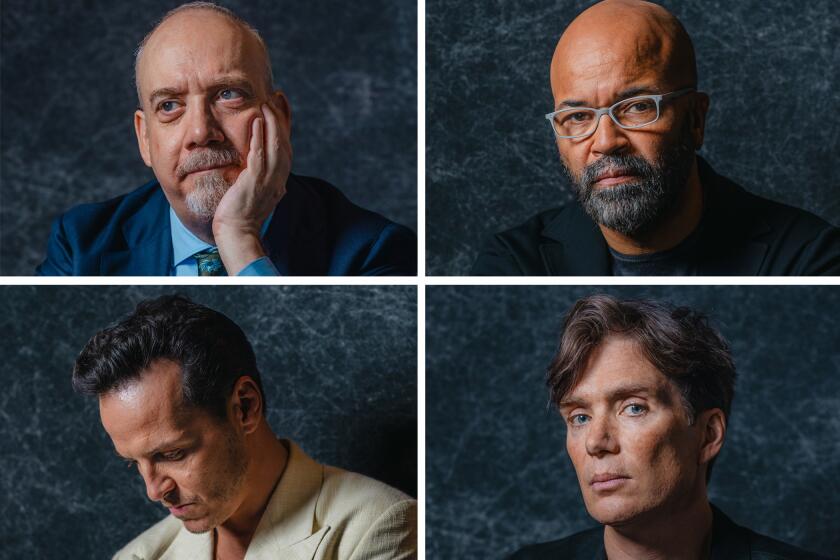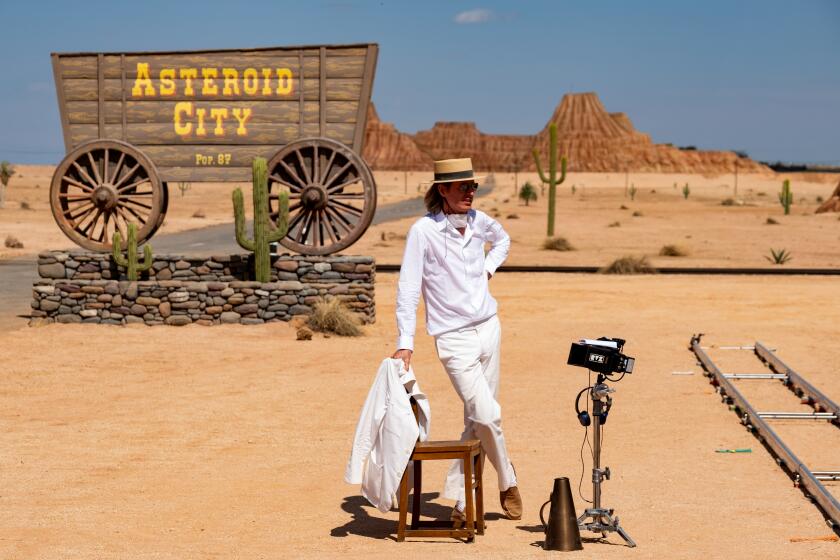Inside the deceptively spare look of Wes Anderson’s ‘Asteroid City’
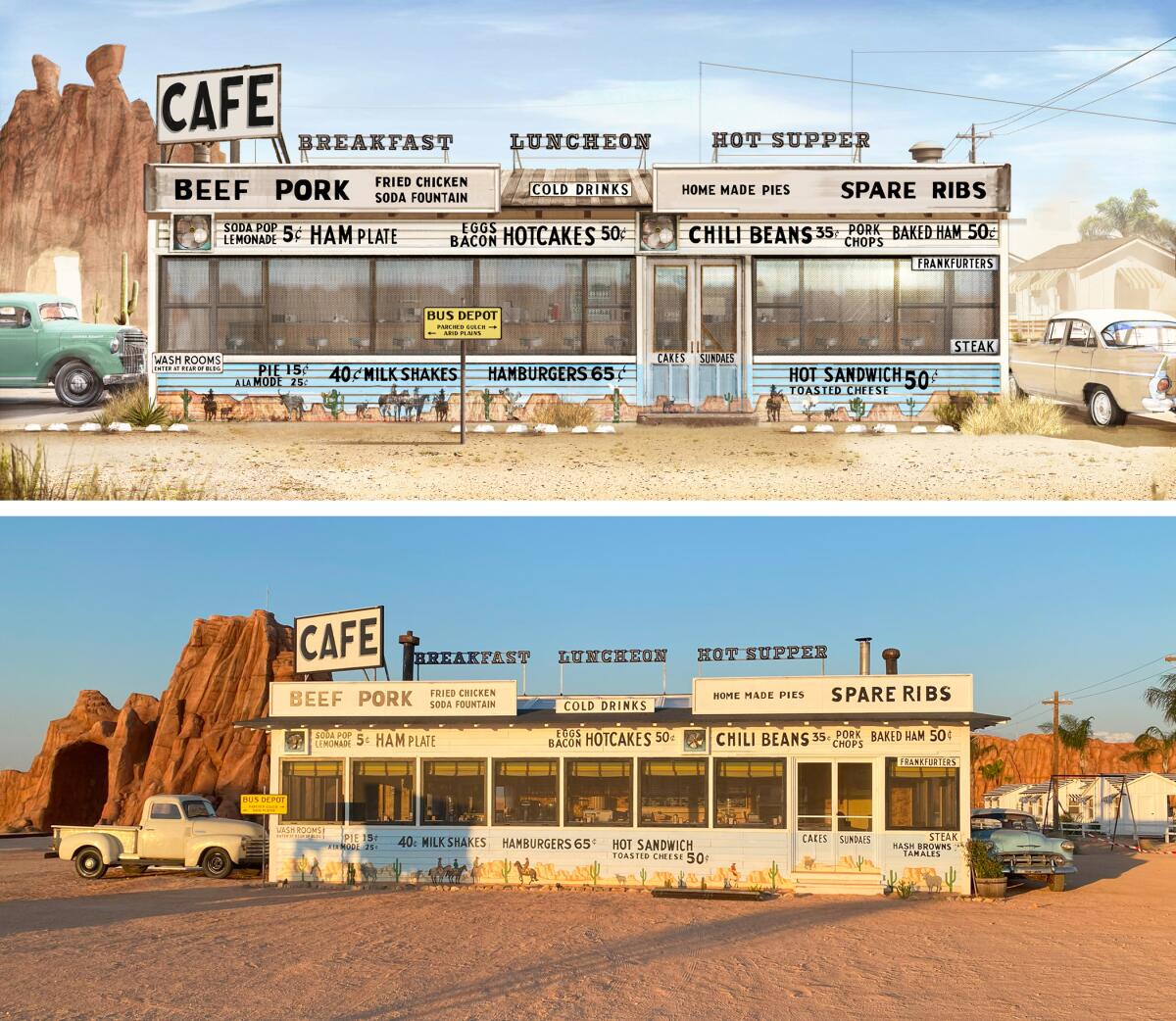
- Share via
You may notice something different about Wes Anderson’s “Asteroid City.” It looks a bit austere, at least by the baroque design standards that distinguish the director’s “The Grand Budapest Hotel,” “The French Dispatch,” “Isle of Dogs” and “Moonrise Kingdom.”
All those productions, as well as “Asteroid,” were designed by Adam Stockhausen, who began working with Anderson as art director on 2007’s “The Darjeeling Limited” and won an Oscar for “Budapest.” Brooklyn-based Wisconsinite Stockhausen also frequently collaborates with Steven Spielberg (“Bridge of Spies,” “Ready Player One,” “West Side Story”) and Steve McQueen (“12 Years a Slave,” “Widows,” the upcoming “Blitz”). Besides “Asteroid,” Stockhausen’s work was also seen in a little thing called “Indiana Jones and the Dial of Destiny” this year, as well as Anderson’s short-film adaptations of four Roald Dahl stories for Netflix.
But don’t assume distraction was a factor in “Asteroid’s” deceptively simple visual imprint. Stockhausen built an entire 1950s, Southwestern town for the show. It was fully functional, with electricity and plumbing infrastructure, along with some ingenious, camera-friendly mechanics. Oh, and he made an entire desert in which to place Asteroid City. Anything that appears stripped down was a painstakingly planned trick of the eye.
Our BuzzMeter film experts are back to predict what Oscar voters will nominate in 10 Academy Awards categories. Vote in the online polls!
“It’s very detailed, it was very studied and we thought an awful lot about every single element that’s in there,” Stockhausen says via Zoom from New York. “Yet it’s not cluttered up; it’s streamlined and simple. Whatever we did was going to be seen in that opening shot of the train going through Asteroid City, so we couldn’t go bananas and let any part of it get too big and out of control.”
Built on a horizontal expanse of 100-plus adjacent farm parcels outside the village of Chinchón near Madrid, Spain, the Asteroid City set was covered with red dirt from a nearby quarry to approximate magic hour in Monument Valley.
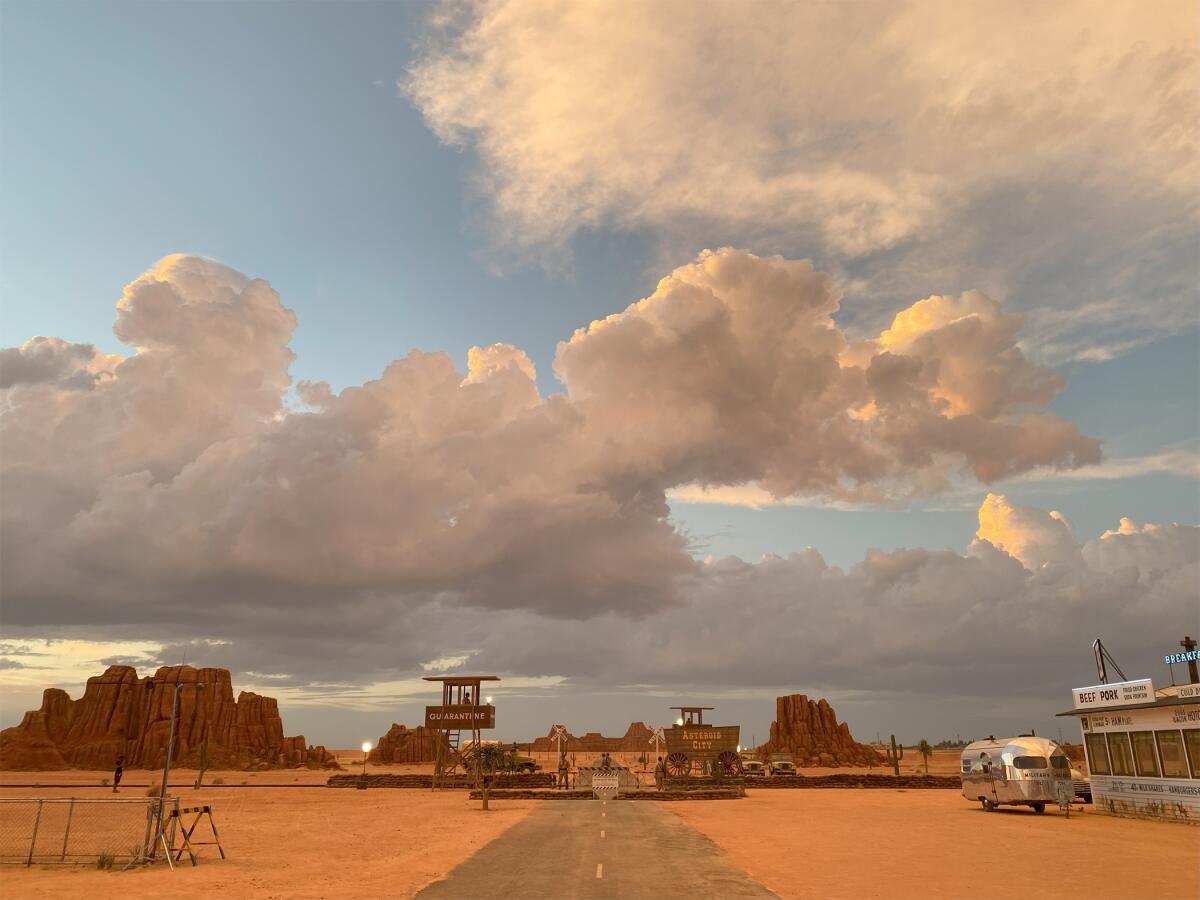
Carved foam mountains and mesas, real and fabricated cactuses of various sizes and forced perspectives were placed — sometimes 1,000 feet away — behind the little town’s period-perfect recreations of a luncheonette, gas station and motel cabins. A pile of junked cars, different scale radio telescopes and an unfinished freeway ramp to nowhere are all visible from that opening train shot. The locomotive itself was a detailed miniature a full-size human could ride atop. Perpendicular to the tracks is a kilometer-long road that accommodates recurring police car chases that go out into what looks like a matte painting but is actually a vanishing point where the manufactured desert meets the Spanish sky.

“It’s all real,” Stockhausen confirms. “Our Asteroid City is all made there. When you’re looking out of the luncheonette’s windows, it is the rest of our town. We did a lot of work so that was possible. A lot of our early discussions were about lighting, how we could show exposure out in the blasting sun with an eye to how bright it was going to have to be inside that luncheonette.
We made the whole top of the luncheonette pop off to create a giant skylight so we could do whole scenes without a single movie light, have the exposure inside and outside the building. That brings a level of reality; it’s there, just in camera; we’re not fiddling with it. In a weird way, you’re taking a place that is entirely a trick, but then you’re shooting it with no tricks in some sense. It plays with reality in a very interesting way.”
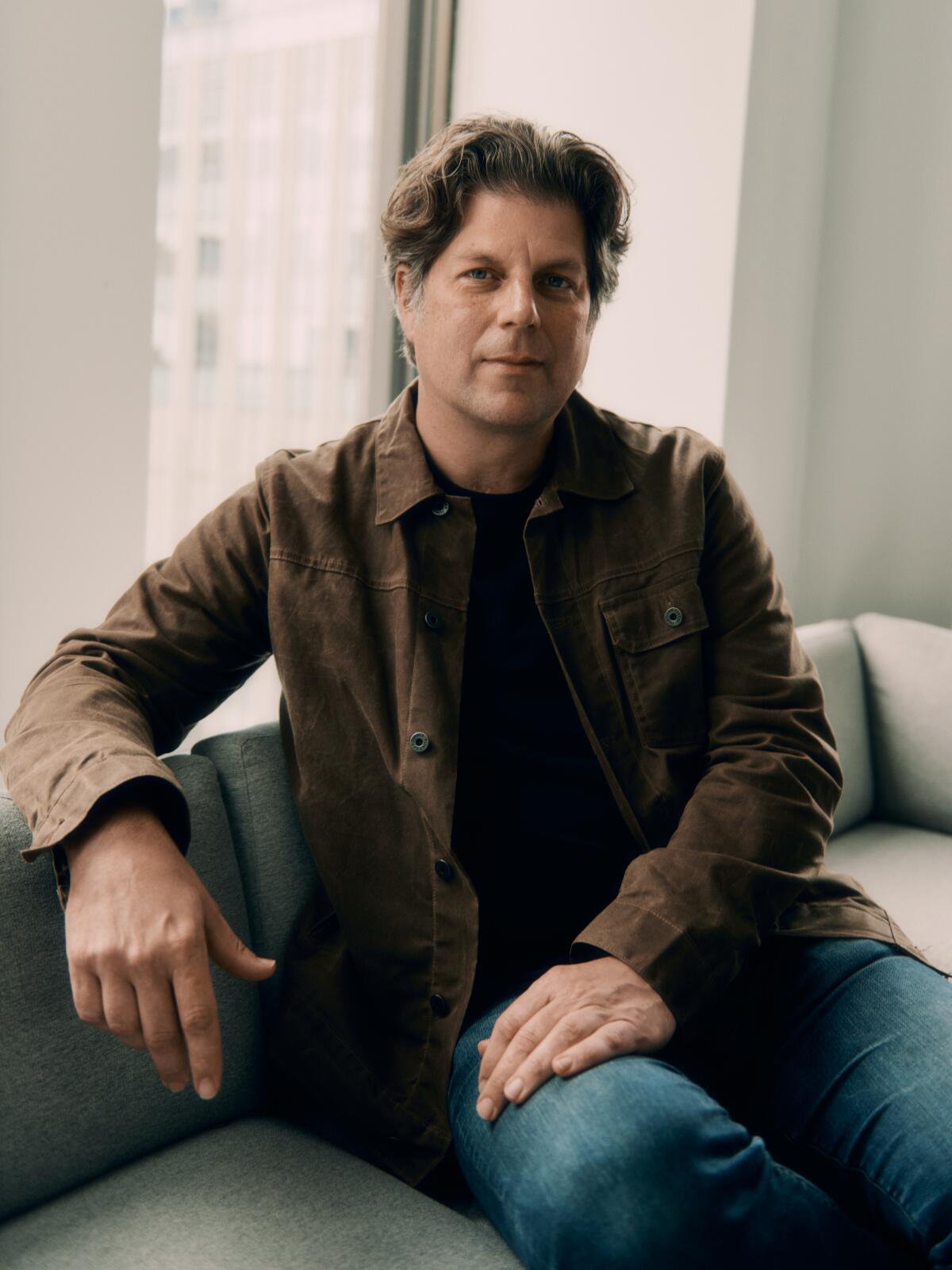
Paradoxically, the artificiality that is a hallmark of Anderson’s style is thematically doubled down on here. The pastel-colored, Mediterranean sunlit town is, in the film’s central conceit, a set for a play being produced in New York City. East Coast scenes are presented in black and white, the assorted proscenium and backstage settings filmed in old, 99-seat theaters in Chinchón and nearby towns.
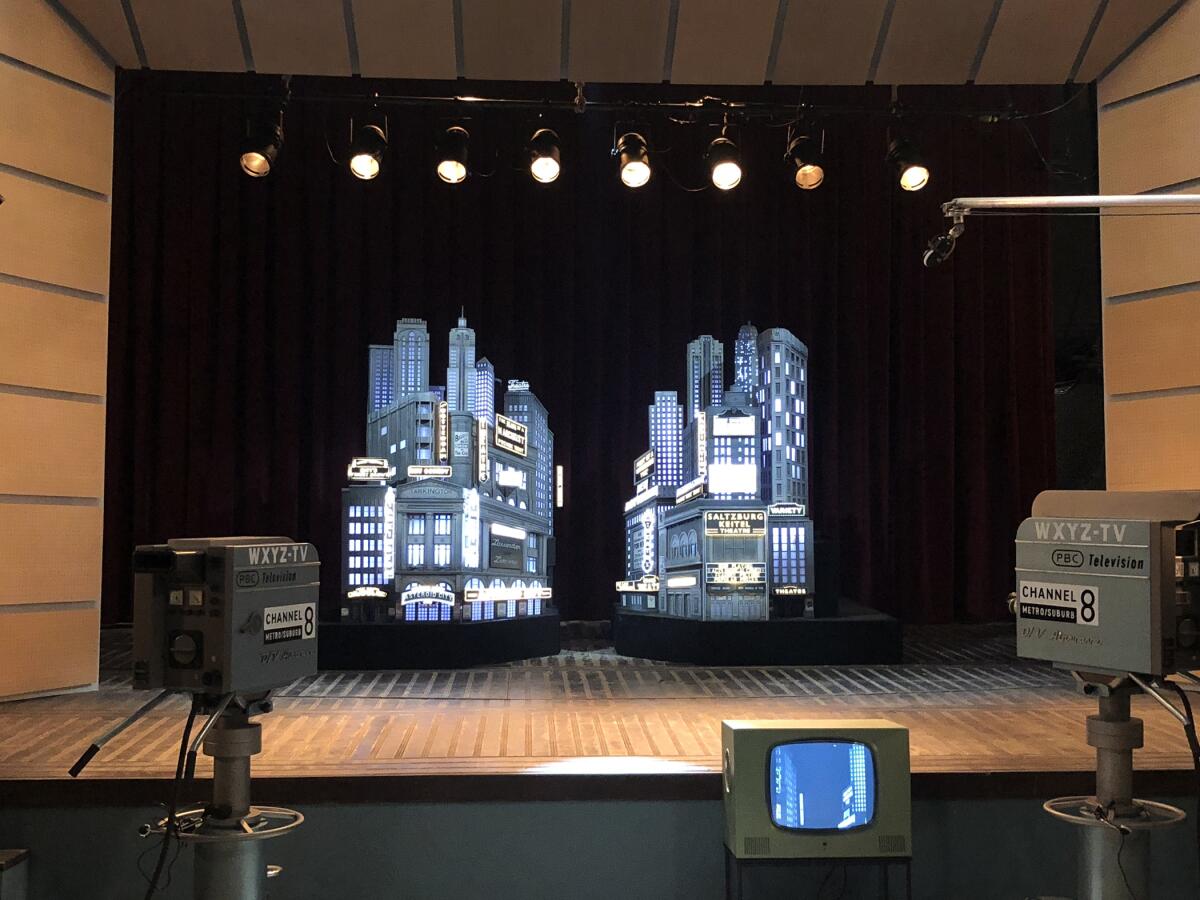
Parts of the millennia-old meteor crater that gives Asteroid City its name were also shot in the theaters. The impressive interior of a rustic beach house where Edward Norton’s playwright first meets the production’s star (Jason Schwartzman) was built in a fragrant but charming garlic drying warehouse.
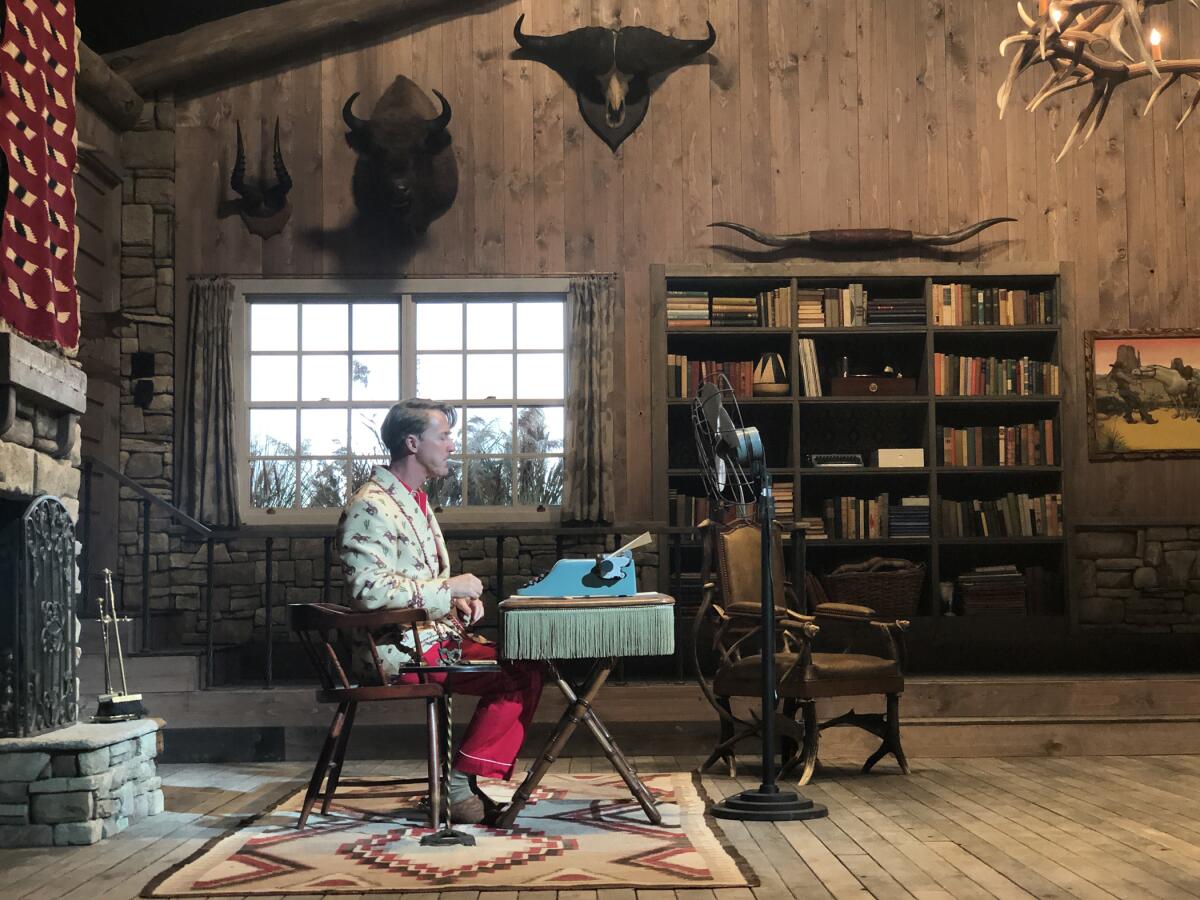
Why go all the way to Spain and build this, though? Stockhausen and Anderson diligently studied both location and stage-bound American desert films such as “Ace in the Hole,” “Kiss Me, Stupid” and “Bad Day at Black Rock” but wanted the control and heightened look that creating their own wasteland enabled.
With “Asteroid City” and four short films based on Roald Dahl stories, Wes Anderson has been busy. And he has a new movie ready to go next year.
“Asteroid City is a built space; it’s a set that’s for the play that’s taking place,” Stockhausen notes. “So it just felt completely natural to me that the place be built, that it have this kind of quality of being a set. That was hard to pull off in the face of the actual Death Valley [near where ‘Black Rock’ was shot]. It has such a dominating look of its own that anything you add to it is just a drop in the bucket, and we couldn’t overcome it. Of course, there’s also the fun aspect of we get to design it exactly the way that we want, we get to say, ‘Does that rock look better behind the gas station or the luncheonette?’”
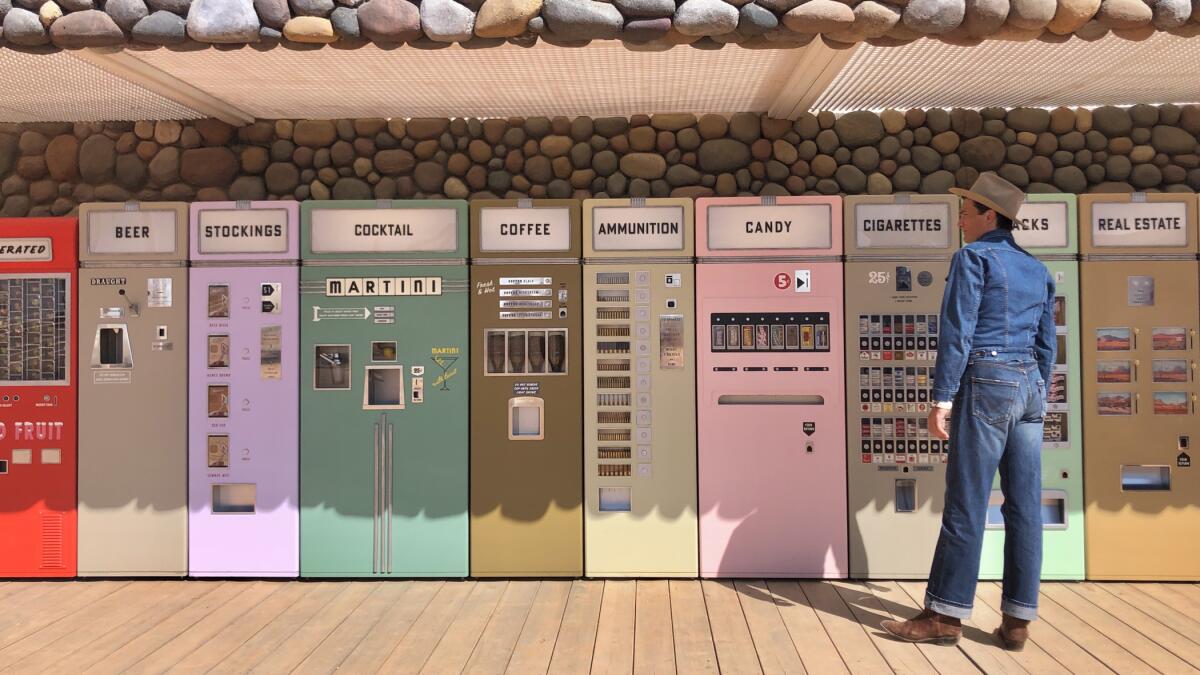
It was the first time Stockhausen built his own, fake-yet-functioning city. And it was mainly a gas to be able to, say, construct motor court cabins one could comfortably flirt between or spend the night in. But operating a municipality is not all fun and games.
“If I had to do it all over again, I would definitely focus more on drainage,” says Stockhausen, hilariously not joking. “We flattened the whole place for our 360-pan desert, and we put in what we thought was a substantial amount of drains to handle water if it came. But it was no match when the real rains came toward the end of our shoot.”
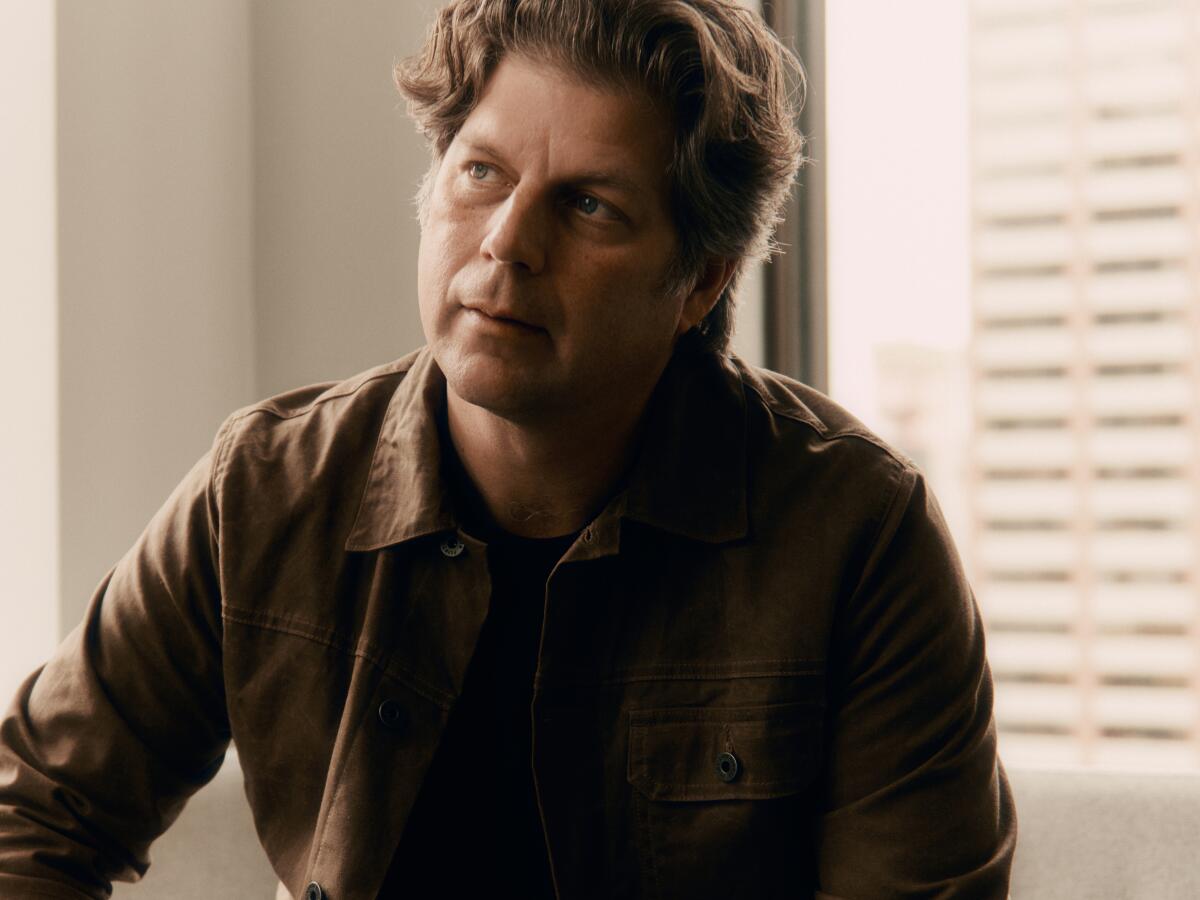
Reality sure can suck — which is probably a good tagline for any Wes Anderson production. But whatever it takes to create the alternative settings for his films, the rewards are worth it.
“I love the motel and the way it suddenly rearranges itself to work scene by scene,” says Stockhausen, a former opera scenery designer. “I love the chili diner, where the latticework over the entire space is really beautiful. And I love the image of that highway ramp that doesn’t go anywhere, that just sort of sits in space. It’s a sculptural object that’s the biggest thing in town and, yet, serves no purpose. It’s very beautiful.”
Sounds like another apt description of Anderson’s cinema.
More to Read
From the Oscars to the Emmys.
Get the Envelope newsletter for exclusive awards season coverage, behind-the-scenes stories from the Envelope podcast and columnist Glenn Whipp’s must-read analysis.
You may occasionally receive promotional content from the Los Angeles Times.
